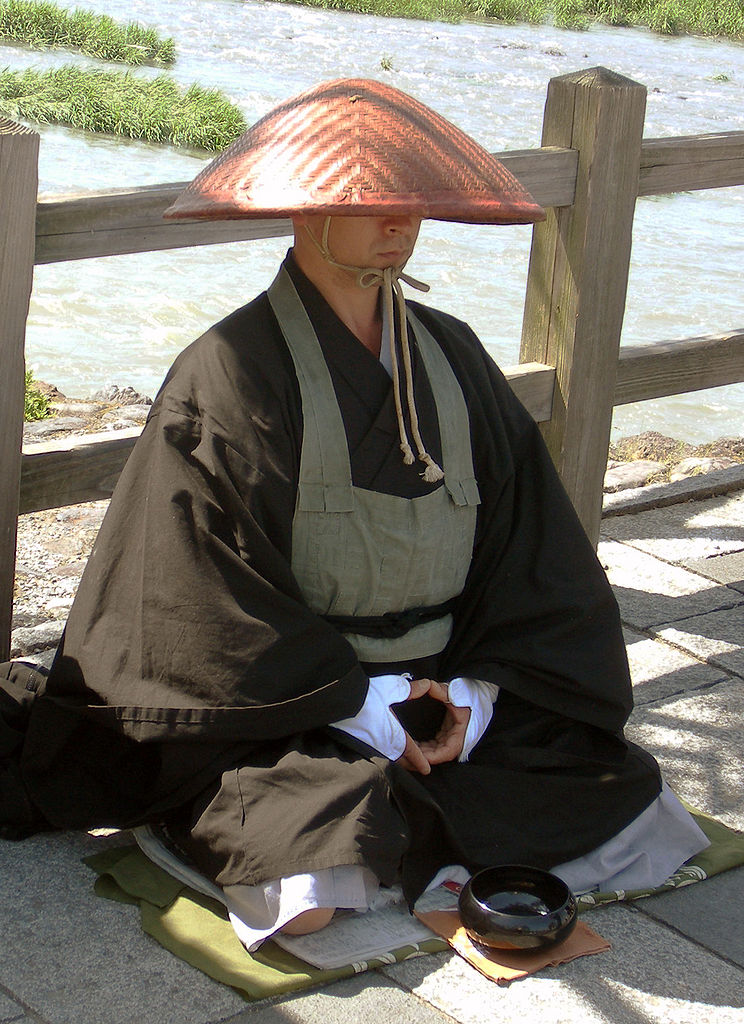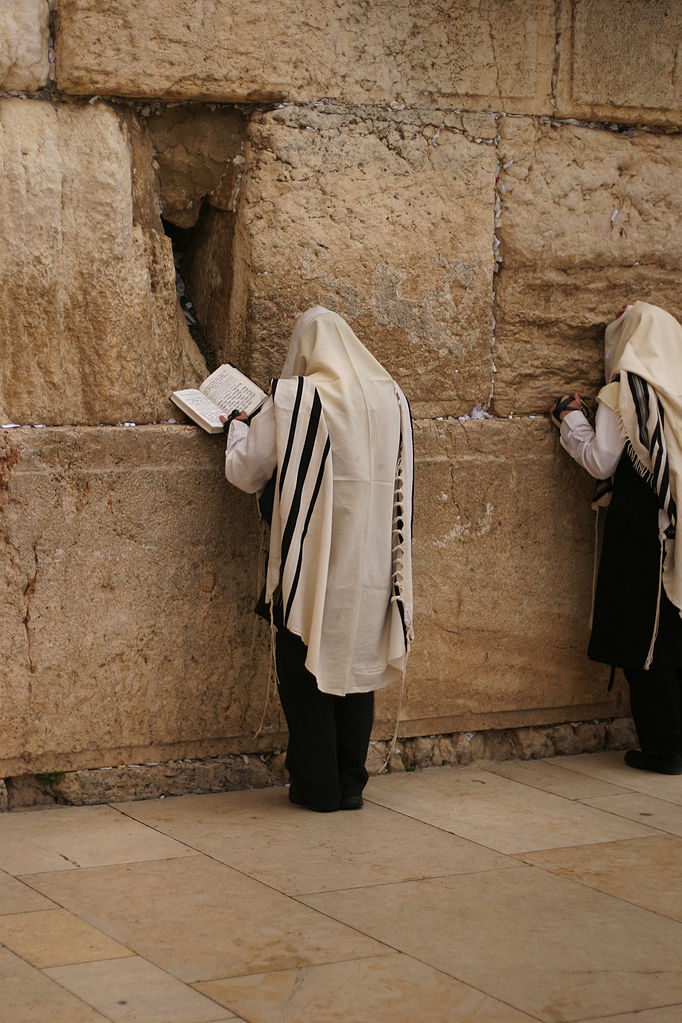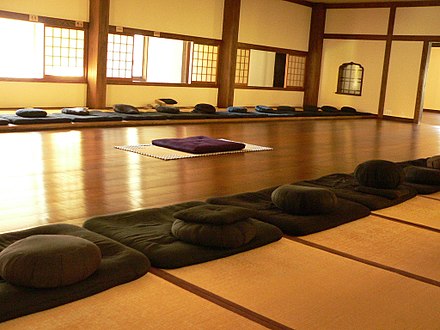
While working on a comparison between modern Japanese philosophy, mainly Nishida and Watsuji, and European existentialism, Thomas Kasulis tells us that Yuasa had “finally put his finger on an issue” that had intrigued him for some time, and was to shape his research for the rest of his career “Modern Japanese philosophy is an embodied enterprise in a way that modern western philosophy typically is not.” In The Body – Toward an Eastern Mind-Body Theory, which he published in 1987, Yuasa explored further the difference between the Cartesian mind-body dualism found in the West, and the potential body-mind unity postulated in the East and actualised in the lives of those following a path of self-cultivation.
The above-mentioned work also contains what Kasulis regards as Yuasa’s most controversial and thought-provoking hypothesis:“that the mind-body issue connection between the view of the East and that of the West concerning the mind-body unity might be understood through his distinction between “‘bright’ and ‘dark consciousness’.”
Yuasa’s starting point here is the following question: “To have an adequate mind-body theory, should one not take into account all the phenomena, those of traditional interest in either East or West?” Rather than trying to go deeper into an explicitation of their differing standpoints on reality, Yuasa undertakes a blend of the two into a sort of meta-narrative that articulates the two views in relation with each other.
A double-layered consciousness – bright and dark: Cartesian self-conscious awareness and Buddhist “no-mind”
Specifically, Yuasa suggests that “consciousness is double-layered. The surface is called ‘bright’ because it is capable of self-conscious awareness. It is, in fact, the layer identified by Descartes’ cogito, the ‘I think’. This is the realm of thought and, in itself, can be abstractly imagined (as Descartes did) to be disembodied. This bright consciousness has been the object of most modern Western philosophy of mind. Concretely, however, it does not stand on its own. It is only the surface of something deeper, something not itself capable of bright self-consciousness. Yuasa calls this layer the ‘dark’ consciousness … Psychoanalytically, [the dark consciousness] resembles the unconscious in some ways. Neurophysiologically, it parallels, in part, the functions of the autonomic nervous system. Phenomenologically, it approximates the lived body examined by Merleau-Ponty and Bergson in their discussions of the sensory-motor circuits. In Buddhist terms, it is related to what is called “no-mind.” In a more precise sense, however, it is none of these. It is rather their common ground, a single aspect of consciousness viewed from various perspectives.”
To make Yuasa’s point clearer, Kasulis gives the concrete example of a motorist whose car “goes into an unanticipated but controlled swerve to avoid hitting a dog. If asked later how she managed to avoid running over the animal, the driver might reply that she “simply reacted.” How did she know when and how to get out of the way, to undertake the complicated maneuver involving, steering, braking, and timing? In a sense, the act was an impulse, the triggering of a conditioned response, that is, the specific rationale of what had to be done and how to do it was dark; it was not something of which the driver was self-conscious.”
The discussion is “reminiscent of the psychoanalytic discussions of the unconscious, yet the impulse to steer out of the dog’s path is not an abnormal, libidinous compulsion to behave in an irrational manner. Rather, the motorist’s impulse was a learned response, the result of months of disciplined training and years of practical experience … Years ago the driver self-consciously decided to condition herself … [she] had to filter through the bright consciousness all the knowledge used spontaneously by the dark consciousness: knowing how animals might behave along country roads, how to find the brake, how much pressure to use in stopping, etc … Knowledge in the bright consciousness had to be internalized through praxis into the dark consciousness. The bright consciousness is reflective; it takes time to deliberate. The dark consciousness, on the other hand, is spontaneous and impulsive. In the split second when the evasive maneuver was executed, there was no time to think of alternatives. In a significant sense, the body, not the mind, decided the action.”
It is clearly not just knowledge and practical training having somehow percolated to a primarily unconscious storehouse of the sort that was envisioned by the Yogacarins. The key sentence here is “Years ago the driver self-consciously decided to condition herself.” As to how precisely this all works, Yuasa admits that the issue requires further study. In the book, he investigates (mainly Japanese) Buddhist cultivation techniques, Indian yogic disciplines, and the training of artists in Japanese poetry and drama.
“The initial step in all these disciplines is that the mind (the bright consciousness) deliberately places the body into a special form or posture. Whether learning a golf swing or learning to sit in meditation, the beginning phase is awkward. The body is uncooperative or inert and one feels, we say, “self-conscious.” The self-conscious bright consciousness is imposing its form on the dark consciousness. Gradually, though, the posture becomes natural or second nature. It is second nature because the mind has entered into the dark consciousness and given it a form; it is an acquired naturalness. Once the transformation takes place, however, there is no further need for the self-reflective bright consciousness and one can act creatively and responsively without deliberation” (Kasulis).
Psychophysical practices East and West
In the West acquired naturalness as second nature has been studied by Aristotle as the establishment of habits. Kasulis writes: “Aristotle maintained that the mere study of moral principles would never produce a moral person. True morality is achieved only through praxis, the incarnate practice of moral decision making in order to establish proper habits … One consciously fits one’s behavior into a form until that form becomes second nature. By such a means we develop moral character.” “Aristotle,” Kasulis adds, “restricted the importance of habit to ‘practical’ sciences like ethics.” On the other hand, “Eastern traditions, generally consider psychophysical habits to be elements not only in moral action but also in cognitive wisdom. In other words, for those Eastern philosophies, all instances of knowing are both practical and theoretical.”Psychophysical techniques such as sitting and walking meditation, as well as esoteric rituals, are used to trigger a ‘transformation’ that will allow us to act spontaneously without deliberation. What Daoism refers to as wuwei or wushin, does not mean ‘no action’ or ‘no-thought’,” but ‘spontaneous action or thought.”
In Japanese, the word “narau,” usually translated into English as “study” is represented by a Chinese character including the wings of a bird. It means learning in the way a baby bird learns how to fly: it watches its parents, and tries again and again until it can fly. The skill is passed on directly through the body of the baby bird, just as in Shingon for instance the rituals are performative gestures that lead to a lived, embodied, enlightenment. In Zen, “when we study the self in this way, we cannot see ourselves as the object of our study; we must rather ‘live out’ our selves” (Shohaku Okumura).
The meditation on breathing as a direct route by which the bright consciousness can contact the dark consciousness.
Kasulis writes: “In short, enlightenment involves the free movement between the bright and dark consciousness.” Whereas in the psychotic, “the dark consciousness rises up to direct the bright consciousness. In the enlightened master or consummate artist … the bright consciousness has put the dark consciousness into a form or posture, preparing it to respond in an approved, yet autonomous, manner.” But, “for the bright consciousness to enter the dark, a psychophysical path is needed.” The transformative mechanism cannot, however, been carried out at the strictly mental level, that is through a conceptual process. “Such unilateral approaches can only produce overly simplified reductionisms.” In Yuasa’s book “meditation is examined as a traditional Eastern technique for integrating the physiological and intellectual … Most contemplative traditions begin with mindfulness, or even control, of breathing. Respiration is one physiological function that can be controlled willfully or allowed to function through the autonomic nervous system. Hence, the meditation on breathing is a direct route by which the bright consciousness can contact the dark consciousness. Once the route has been opened, further possibilities of interaction develop. According to Yuasa’s analysis, this is the core of Eastern mind-body theories.”
The role of the body in religious practice
Kasulis writes: “There is no doubt that a religious person often views the world and behaves differently from one who is nonreligious. An intriguing question arises from this discussion, however, that is often ignored. Namely, how does the religious person come to have those distinctive dispositions?

“In fact,” Kasulis answers, “the practices may be said to precede the belief. That is, one becomes a religious Jew, for ex., by participating in Jewish religious life. It is not that one practices Judaism only after becoming religious.” Especially in the West, ”philosophers and theologians sometimes overlook this basic phenomenological fact. With all their emphasis on belief and knowledge, it is easy to forget that practice precedes, or at least accompanies, them both … Too often, becoming a Christian or a Muslim entails a ceremony whereby you state that what is written in the Bible or the Quran is the Truth. Belonging to a particular religious community is a matter of ‘identity’ rather than one of actual practice. One often talks of ‘nominal” Christians or Muslims. In the East, “religious beliefs are [seen as] embodied through religious practices. Religious sensitivity, like the appreciation of music or art, for example, is a cultivated mode of relating to the world … Religiousness is not merely a cerebral, intellectual function; it also involves a foundation in the dark consciousness … For Yuasa, religiousness is not the sublimation of instinctual, libidinous drives, but a creative expression achieved through the disciplined internalizing of specific forms and postures of the religious traditions. In other words, the conviction behind religious belief is a psychophysical achievement attained through performing the proper religious forms … Religiousness is acquired through years of psychophysical exposure and practice. One must be an insider to the religious life in order to grasp its meaning. Religious sensitivity, like artistic sensitivity, is rooted in an acquired expert knowledge.”
Psychosomatic Healing
My own experience with psychosomatic issues in the West is that, when the patient brings it up, the doctor just turns a blind eye: it was not part of the curriculum of his medical studies! In acute cases when it is impossible to deny the facts, Yuasa points out that Western medicine is, in Kasulis’s words, “grounded in physiology, knowledge arising from the dissection of corpses, the vivisection of animals, and surgery on anesthetized human beings. In these three contexts, there is no functional human consciousness, so traditional physiology teaches little about the living mind-body relationship.” In addition, “the Western methodological prejudice toward the normal and universal has often prevented any consideration of achieved mind-body relationships.” However, Kasulis adds, “most recently … researchers have begun to take seriously the claims of yogins, Zen masters, and other spiritually developed individuals. The preliminary evidence indicates these individuals can indeed consciously control physiological functions formerly thought to be strictly autonomic: pulse rate, blood pressure, and the frequency of brain waves, for example.” Of course, this research has not reached mainstream practicing physicians, or even institutions such as the American Heart Association, which endorses daily (physical) exercise and abstention from smoking, but not daily meditation or relaxation exercises. At least, that wasn’t the case in Yuasa’s time, and it would be great if it were today.
Freedom and Conditioning
Kasulis notes that “the Western philosophical issue of free will and determinism is seldom discussed by Japanese philosophers, and Yuasa’s book is no exception. Yet, by the very fact that Yuasa is concerned with self-cultivation, the nature of conditioning is examined from a distinctively Asian perspective. Specifically, Yuasa is interested in the process by which one conditions oneself to achieve spiritual freedom and aesthetic creativity. Again, we find the Japanese emphasis on achieving freedom, rather than the Western focus on the universal presence of freedom or determinism. That is, Yuasa’s question is not about whether human beings are intrinsically free, but about how much freedom can be psychophysically attained.”
Rather than attempting to eliminate a bad habit, the East goes the route of replacing it with a better one. Yuasa regards everyday habits as not “not self-consciously executed,” stating instead, that they are “impulsive,” that is, “they arise from the dark consciousness.” Since, once they are completed, they become the object of the bright consciousness’s reflection, “the bright consciousness can deliberately establish a behavioral form or mode that can eventually become second nature. At this point, the actions will not longer be self-conscious, but they will fit the pattern originally established by self-consciousness (the bright consciousness)” (Kasulis).
Cross-Cultural Philosophical Dialogue
Kasulis concludes his introduction with a few comments on Japanese scholarship, Yuasa’s respectful approach to both Eastern and Western cultures, while making a good case on “acquired body-mind unity” and the difference between Japanese and Western comparative rhetoric.
Kasulis has nothing but praise for the openness of Japanese scholars to other cultures, both in the East – Chinese, and also Indian – and the West. He writes: “In some ways, the Japanese are the epitome of comparative philosophers. Modern Japanese intellectuals generally know more about the full range of Asian philosophies than do their colleagues on the Asian mainland … The Japanese deeply appreciate the mainland traditions so influential in their own intellectual history, and study all great Asian traditions in an attempt to know their own philosophical roots. Similarly, many Japanese intellectuals know quite well the major works of Western philosophy, especially those of the modern Continental tradition. Some Japanese departments are so thoroughly Western in orientation, in fact, that they seem to be branches of European departments. Furthermore, living in one of the most advanced technological nations of the world, the Japanese philosopher is generally as knowledgeable about scientific developments as are European or American philosophers. In short, Japan is at the crossroads of many great intellectual traditions and movements.”
So, “it is not surprising, then, that Yuasa refers to a broad range of disciplines.” Kasulis also notes that, in Yuasa’s case, his focus was “not only on what these various disciplines have said about the body, but also on how they approach the topic. That is, Yuasa is at least as much interested in methodology as in content.”
While showing respect for the Western tradition, where the very concept of self-cultivation is lacking, “Yuasa has made a good case … for acquired body-mind unity “… He “has shown that there is at least one point of contact between the world of the Zen Buddhist and the physiologist, the world of the “Noh” actor and the psychologist, the world of the acupuncturist and the phenomenologist. In short, Yuasa has given us a starting place for an East-West dialogue and the promise of finding further connections in the future. As the crossroads of the world’s great intellectual traditions, Japan foreshadows the future of all societies. Through the boldness of his project, Yuasa has found a vantage point from which we can see, in some preliminary way, the underlying pattern in an apparently chaotic confrontation of modes of thought.”
Before ending, Kasulis issues a warning about a difference in the Japanese style of comparative rhetoric, that he has observed, often stands in the way of taking Japanese seriously. “In the West, we tend to present our philosophical arguments so that the logical skeleton is as explicit as possible: an initial statement of thesis, the precise enumeration of the key premises, the marshalling of supportive evidence for each premise, and finally the statement of conclusions … [So] we are suspicious of the argument that does not lay all its cards on the table right from the outset.” The Japanese, on the other hand, “want to see more of the process of thinking along with the product. Thought does not go straight to its goal; it circumambulates a bit, takes detours, runs into dead-ends. And the Japanese are uneasy with philosophical presentations that distill out these “impurities.” This difference in preference for philosophical style between the Japanese and the West may lead to misunderstanding. The Western reader should be cautioned that what at first may seem like ambiguity might actually be subtlety, what seems like unclarity may be nuance.”
Sources:
Thomas P. Kasulis – Engaging Japanese Philosophy
Thomas P. Kasulis – Editor’s Introduction of Yuasa Yasuo’s The Body – Toward an Eastern Mind-Body Theory

